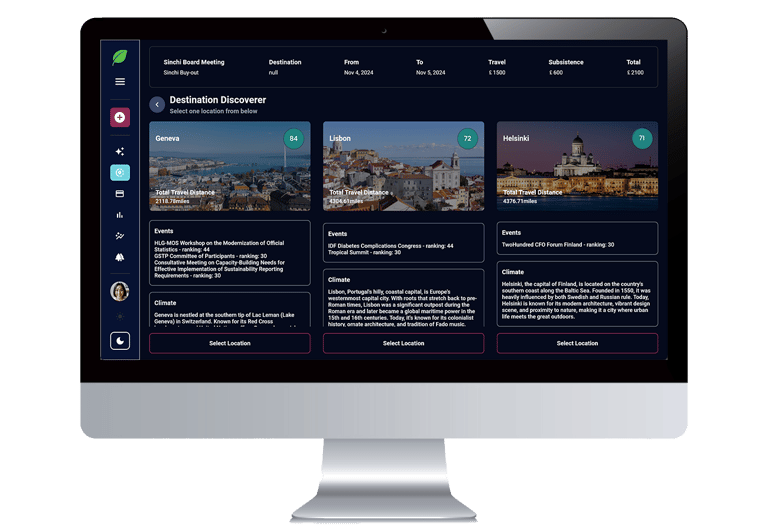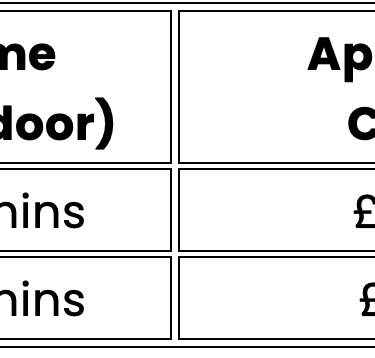How to Design Events for Low-Carbon Travel Without Sacrificing Convenience
Most delegates want to travel sustainably, but convenience usually wins. By reducing friction, aligning event design with low-carbon options, and using behavioural nudges, organisers can make greener travel the easiest, most rewarding choice. This blog explores how Bizumi helps events achieve that shift.
CARBON FOOTPRINTEVENTS
Irena Holdsworth
9/18/20256 min read


Introduction: Why Good Intentions Aren’t Enough
Most delegates don’t wake up thinking, “I’ll take the least sustainable option to get to this event.” In fact, research consistently shows that people want to travel more sustainably. A YouGov survey commissioned by ExCeL London found that 65% of UK attendees would pay more for environmentally beneficial products, and 63% believe electric vehicles are the future.
So why do short-haul flights still fill up when rail routes are available? Why do car parks overflow while buses leave half-empty? The answer is simple: convenience wins. When the sustainable choice is harder, slower, more expensive, or less obvious, even the most eco-conscious delegate is likely to default to what’s easiest.
This is where event organisers face both a challenge and an opportunity. If we want to reduce travel emissions, which make up the majority of most event footprints, we must design events where the green choice is the easy choice.
1. The Behavioural Science of Travel Decisions
Understanding delegate behaviour starts with recognising the decision-making journey. It isn’t rational and linear, it’s influenced by habit, perceived effort, and mental shortcuts.
The Friction Principle
Behavioural scientists know that even a small amount of extra effort, what’s known as “friction”, can drastically reduce uptake. If booking a rail ticket requires opening a separate website, navigating an unfamiliar interface, and manually comparing prices, a time-pressed delegate may just click “book flight” on a familiar platform instead.
Conversely, reducing friction can dramatically increase adoption. If a discounted train ticket appears at the same time and in the same place as the flight option, with the time savings from city-centre arrival clearly shown, the odds of choosing rail rise sharply.
The Timing of Influence
Another key insight: the best moment to influence behaviour is before the decision is final. By the time delegates have booked their travel, it’s too late to change their mode. This means organisers need to surface sustainable options at the point of commitment, whether that’s during event registration, when booking accommodation, or in pre-travel communications.
When the sustainable choice is harder, slower, more expensive, or less obvious, even the most eco-conscious delegate is likely to default to what’s easiest.
2. Lessons from the Leaders
Some events and venues are already applying these principles with impressive results, and the lessons are clear.
Case 1: IBC Amsterdam — Seamless Public Transport Access
In partnership with RAI Amsterdam and GVB, the International Broadcasting Convention integrated a QR code for unlimited city-wide public transport directly into every attendee’s event badge. No separate tickets, no extra payments, no app downloads. The result? Public transport became the default, last-mile travel mode for thousands of delegates.
Case 2: Koelnmesse’s Built-In Travel Tickets
Cologne’s Koelnmesse venue has long included a public transport ticket for the local VRS network with every event admission pass. This isn’t just a nice perk, it’s a subtle but powerful nudge. By embedding the ticket in the event credential itself, they’ve made sustainable last-mile travel simpler than any alternative.
Case 3: Batimat’s Carbon Calculator at Registration
The organisers of Batimat in Paris went further, integrating a carbon calculator directly into the online pre-registration process. Delegates input their planned mode of transport and instantly see the carbon impact of their choice, alongside lower-carbon alternatives. This transparency transforms carbon emissions from an abstract concept into a tangible, personal number, prompting many to reconsider their travel plans before booking.
3. How Bizumi Brings Behavioural Nudges into Event Planning
At Bizumi, we’ve built these behavioural science insights into our sustainable travel planning platform from the ground up. Our philosophy is simple: make the low-carbon route the path of least resistance.
Here’s how:
Multi-mode comparison in one view — Flights, rail, coach, and other options ranked not just by price and time, but by emissions.
Smart surfacing of sustainable choices — Low-carbon modes appear first in search results, reducing the likelihood of defaulting to higher-emission travel.
Integrated booking links — No need to leave the platform to buy a ticket for the sustainable option.
Dynamic nudges — “This route by train emits 92% less CO₂ than flying” messages appear at the decision point, not in a post-event sustainability report.
The key is to make these features feel like helpful conveniences, not moral lectures. Delegates are more likely to change behaviour when the sustainable option is also faster to book, cheaper, or simpler to use.
4. Designing Events with Sustainability Baked In
Making the green choice easy isn’t just about individual booking screens, it’s about designing the entire event experience to prioritise low-carbon travel.
1. Venue Selection for Sustainable Access
The easiest way to boost sustainable travel adoption is to pick venues that are already well-served by public transport and high-speed rail. This minimises reliance on car hire and domestic flights.
Example: ExCeL London’s direct link to the Elizabeth line means delegates can get from Heathrow to the venue in 43 minutes, faster than many taxi journeys across the city.
2. Align Event Schedules with Transport Timetables
If the last train leaves before the final session ends, many delegates will drive or book a hotel unnecessarily. Aligning start and end times with major transport connections can eliminate this barrier.
3. Integrate Sustainable Travel into Event Marketing
Don’t hide transport details in a “How to Get Here” tab, make them part of the event’s value proposition. Promote the time savings, comfort, and cost benefits of sustainable modes alongside their environmental advantages.
4. Partner with Transport Providers
Form partnerships with national rail operators, coach companies, and even airlines for discounted or priority booking on lower-emission options. Eurostar, for instance, has been known to partner with events to promote rail as the preferred option for Paris–London travel.
Don’t hide transport details in a “How to Get Here” tab, make them part of the event’s value proposition.
5. Overcoming the Perception Gap
One of the biggest barriers to sustainable travel adoption is perception. Many delegates assume:
“Flights are faster” — which may be untrue once you factor in airport transfers, security, and check-in times.
“Rail is more expensive” — which isn’t always the case, especially when booked early or with event discounts.
Event organisers can close this gap by presenting side-by-side comparisons that reflect the full journey time and cost, not just the headline figures.
Example: London–Paris Travel Comparison


When presented this way, the sustainable option isn’t just better for the planet, it’s often faster and nearly the same price.
6. The Role of Recognition and Rewards
Delegates are more likely to make sustainable choices when they’re acknowledged and rewarded for doing so.
Possible strategies:
Sustainability badges in the event app for low-carbon travellers.
Entry into prize draws or exclusive networking sessions.
Discounted tickets for future events if a sustainable mode is chosen.
This taps into the human need for recognition and turns sustainability into a positive identity marker rather than a sacrifice.
7. The B-Corp Perspective — People, Planet, Profit in Harmony
From a B-Corp lens, making the green choice easy isn’t just a sustainability tactic, it’s a commitment to treating delegates as stakeholders in a shared mission.
People: You’re improving their travel experience by making it simpler, cheaper, and less stressful.
Planet: You’re reducing emissions at the source, not relying solely on offsets.
Profit: You’re building a reputation for leadership in sustainability, which can attract more attendees, sponsors, and partners.
This is exactly where Bizumi positions itself, helping event organisers balance all three priorities without compromise.
8. Practical Action Plan for Organisers
If you’re ready to design events where the sustainable option is the obvious one, here’s a Bizumi-approved checklist:
Select a venue with strong public transport and rail links.
Align schedules with transport timetables to eliminate last-train anxiety.
Integrate multi-mode travel options into the registration process.
Highlight time and cost benefits of low-carbon travel in all communications.
Partner with transport providers for discounts and promotions.
Acknowledge and reward sustainable travel choices.
Conclusion: From “Should” to “Want To”
The shift we need isn’t just from high-carbon to low-carbon travel, it’s from reluctant compliance to enthusiastic adoption. Delegates shouldn’t feel like they’re making a sacrifice when they choose the train or the bus; they should feel like they’re making the smartest, easiest, most rewarding choice available.
Event organisers hold the power to make this happen, and with tools like Bizumi, the technology and insights are already here. It’s time to design events where sustainability isn’t a side note, but the default.
A short-haul flight takes 4hrs & 20mins (door-to-door), costs £120 and emits 173kg CO2e
The Eurostar train takes 3hrs 45mins (door-to-door), costs £110 and emits 11kg CO2e.


